Best Places to Photograph Angkor Wat area – Tips from local tour guides
July 11, 2022
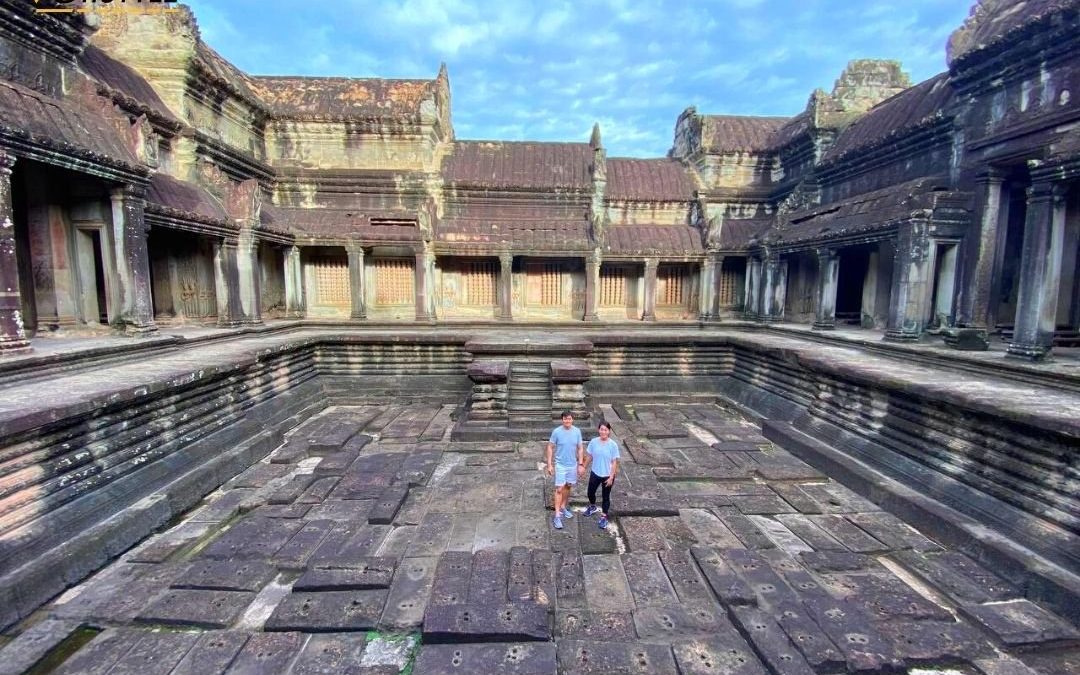
Table of Contents
Best Places to Photograph Angkor Wat area – Tips from local tour guides
Best Places to Photograph Angkor Wat Area
Once visiting Cambodia, Angkor Wat is a must-see location. Although it was constructed in the 12th century, the temple is well protected and has become an ideal backdrop for lovely pictures. Enjoy an adventurous search for the best places to Photograph Angkor Wat!
As it has become one of Cambodia’s major tourist attractions, Angkor Wat is busy throughout the year. So if you’re looking for a decent photo for your Social media, you have to be patient in arming yourself.
Read below about the best places in Angkor Wat to pursue your desire to get a marvelous photoshoot and the most memorable experience of all Siem Reap Tours.
North and South Libraries at Angkor Wat
You will pass these two libraries as you enter the Temple of Angkor Wat. You can play with the light or stand in front of one of the libraries. Whichever your position is, you will get a nice photo for your social media.
Best Places to Photograph Angkor Wat area. Libraries at Angkor Wat
Angkor Wat Path
A small path aside from the main road is an ideal photo spot for most tourists. It is quiet and a perfect way to escape from the locals and most tourists walking on the main path. This way, you can have a nice background of Angkor Wat temple without being crowded with people.
Note the best Angkor Temples Sunrise Tour on Klook.
Gorgeous Sunrise over the Northern Reflection Pond
This is likely Angkor Wat’s most legendary location. A famous tourist attraction is a sunrise across the northern reflection pond. Angkor Wat’s shadow becomes visible as the sun peaks through the Cambodian jungle’s limbs.
Once the sun’s rays break the canopy of the jungle, the temple’s red, purple, and salmon-colored sandstone is illuminated. Each Angkor itinerary should include a sunrise. However, rushing for Angkor Wat in the early morning is not recommended if you don’t like crowded with people squeezing each other for a nice photo shot.
Still, you can have the option to grab your unspoiled photograph at another time of the day. Angkor Wat is best seen in the early morning or late evening light. This is when the stone of the temple is particularly brilliant. I do not guarantee whether it will be less crowded than it is in the morning, but why not try it out? Maybe it’s your lucky day.
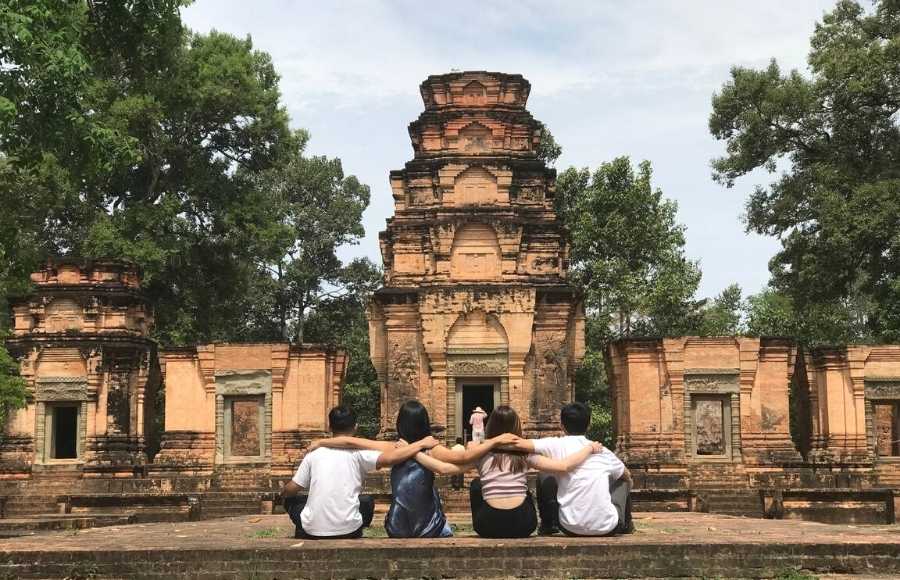
Angkor Wat Terrace of Honor
Turn left at the first steps after the library and before the basin and follow the path for about 40 meters to a big tree for a magnificent view of Angkor Wat’s five towers, especially at sunrise. The path leads to a terrace kin a cross shape, known as the Terrace of Honor, just in front of Angkor Wat’s main entrance tower. Not many tourists have found this place, so you are motivated to look for it. Play with the background, and you will have an ideal photo at Angkor Wat.
Phnom Bakheng Temple
Phnom Bakheng is the most famous location to watch Angkor Wat’s sunrise and sunset. This is one of those locations where its reputation is fully lived. Phnom Bakheng is open until 7 pm, meaning you can watch the sunset inside the temple itself rather than just from the outside.
It’s situated on top of a mountain, which implies you get a truly beautiful view of the surrounding temples and landscape as the sun dips below the horizon.
The gate to Phnom Bakheng is just after Angkor Wat on the left side of the road if you come from Siem Reap town, yet you will see Phnom Bakheng before arriving at Angkor Thom. The temple itself is not very large, so the officers at the top of the mountain enable only 300 visitors inside at the moment to regulate the crowds.
They offer each tourist a lanyard to wear around their necks, which returns as they leave the temple. Then the officers collect the lanyards and hand them over to the next group of visitors waiting to get in.
Due to the limited number of visitors, you need to reach the top of the mountain for about an hour before sunrise/sunset to get a good sunset perspective inside the temple itself.
Remember: If in case you cannot rival for your position to get inside the temple, don’t feel upset. Just stay outside the temple. A viewing platform provides a wonderful view of the sun setting across the jungle.
Best places for Sunrise and Sunset Shooting in Angkor Wat, and Siem Reap (some of the best sunrise in Cambodia)
Angkor Wat sunrise and Angkor Wat sunset
Which would you choose?
Imagine the first rays of sun piercing the trees and casting on the old shrines. Such a drastic shot attracts Siem Reap’s photographers. Sometimes, however, telling more is the mysterious atmosphere.
In selecting the finest sunrise and sunset spots in Siem Reap, each place establishes a storytelling context that is best displayed through your picture abilities. The real trick is the lighting. Photos are shown at distinct times of the day.
In searching for the best places to Photograph Angkor Wat, take some time to witness the sun shining below the horizon as the heat of the day subsides.
An intense, ever-changing color kaleidoscope is sweeping across the sky, marking the end of another day in Siem Reap. Note these amazing sunrise and sunset viewpoints during your stay in Angkor Wat, Siem Reap. The list below will provide adventurers and Zen-seekers with views from the mountainside to hot air balloons and cruises.
The sunrise and sunset times differ only slightly based on the moment of the year, ranging from 5.30 am to 6:00 am and 5:30 pm to 6.30 pm. Plan the viewing time for your shooting accordingly, and don’t forget your camera!
Note the best seller Angkor Wat tour on GetYourGuide.
Phnom Bakheng – my favorite Cambodia sunrise
This mountain, which is 60 meters high, is a favorite location among admirers of sunrise and sunset. It’s also the dream of a photographer with its far-reaching countryside viewpoints. At this famous countryside escape, visitor numbers are regulated and strictly capped at only 300 people.
You are suggested to enter the site and collect your lanyard one hour before sunset, allowing you time to mount the steep, tight steps to the top terrace. The sun descends gracefully and effortlessly over West Baray, casting a golden light over Angkor Wat’s towers. You are advised to do this for sunrise as well.
Sunrise and Sunset at Phnom Bakheng Temple
A Siem Reap sunrise or sunset experience is a must!
If this is a bucket list experience for you to see the sunrise at Angkor Wat, then you should go. The only thing you have to be prepared to face the crowds and don’t expect it to be peaceful and quiet.
In this section, I want to warn you that it is completely underestimated to see the sunset at Angkor Wat. There are not only lots of amazing places within Angkor Archeological Park to watch the sunset, but you can see the sunset without even purchasing a costly ticket to Angkor Wat.
And good news for you while it’s a real rumor that the Angkor Wat grounds are FREE to enter after 5:30 pm every day! The guards are not even going to verify your ticket.
Head for sunset at Angkor Wat before your full-day trip to the Angkor area’s temples. You will save days on your pass and prevent burnout at the temple so you can enjoy your sunset experience without thinking about how tired and hungry you are after a lengthy day of heat visiting Angkor Wat.
Angkor Wat Moat
Go to the East of Angkor Wat and get a beautiful view of the sunset behind Angkor Wat. On this side of the temple, there are no reflective baths inside the wall, and the moat around the outside reflects the Angkor Wat sunset view.
When the temple is not permitted to enter, come in from the city and take a right at the T junction before Angkor Wat to get to the Eastside door after 5:30 pm. Turn the angle, and you will be prime for sunset on the temple’s east side.
Angkor Thom (Bayon Temple)
Bayon Temple is situated on Siem Reap’s northwest side. A multitude of towers facing distinct directions is the most photographer-friendly characteristic, making it a favorable place for unique characteristics at sunrise and sunset.
Stone faces at Bayon temple provide an outline for sensitive captures, and they are better captured at the platform’s west point in the first sunlight. In line with a clear morning sky backdrop, there are three towers, don’t forget that. At sunset, taking it as an opportunity to create some shadow shots as the carvings and rocks are overcast.
Important Tips
Be well prepared with your camera or phone on time to record drastic light changes that are perfect in the early morning when there are fewer visitors.
If you are a shooter who likes using many different lens types, there is no need to change the lens, while a 55-200 mm lens or something comparable is already a good staff to bring along. Pack light as some climbing to the top platform is required.
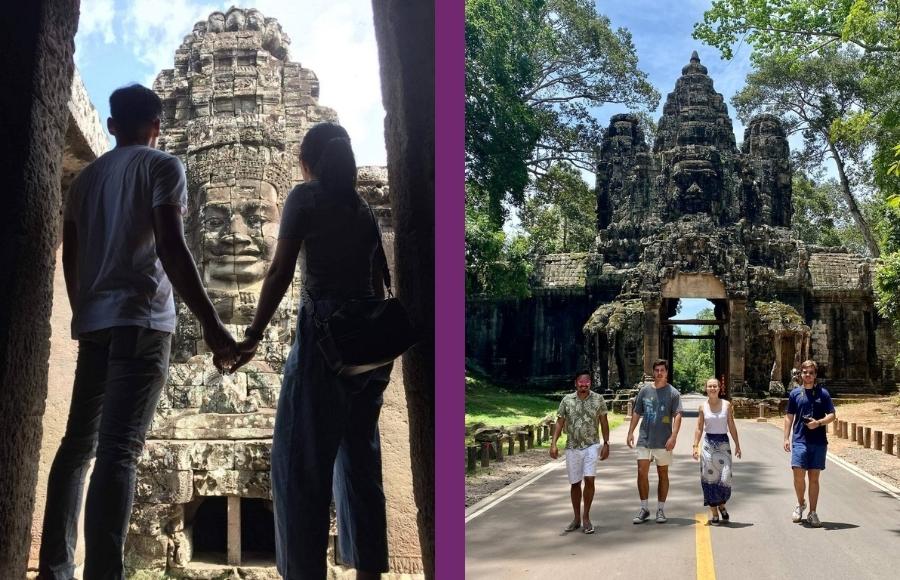
Angkor Thom (South Gate, enjoy the moat)
The Khmer Empire’s ancient capital city can end your day of a tiring temple touring perfectly. After having a tour at the Elephants’ Terrace and the Leper King’s Terrace, head to the south door of Angkor Thom.
It is perfect to see the bright sky over the temple moat at sunset. Catch the colors in the water and the temple and its statue reflections. It will be crowded here, but less so in the evening.
Be aware that many group tours start their morning temple circuit with Angkor Thom first.
Operating daily of the Angkor gondola, with a closing time of 6 pm to allow sunset travel, travelers can appreciate the gently-passing panorama from the meandering moat of Angkor Thom’s great wall.
These traditional Khmer boats can handle up to four passengers, and it is possible to cater to unique occasions. Make a reservation to book your memorable boat ride for sunset at Angkor Thom Gate.
Ta Prohm Temple (A Concealed Shrine)
While most visitors pay their afternoon visits to this tree-covered temple, little do they understand its distinctive environment is a perfect spot for sunrise and sunset?
The temple faces east. While morning lighting can be difficult, the greatest advantage is its tranquility, with large groups of tourists likely congregating in front of the primary door of Angkor Wat.
Because the overcovering trees have a smaller range of sunlight before the sunset, the light between the trees that awns the ruins provides a fairly tomb-raider atmosphere.
Important Things you should know
The best sunrise begins between 5:50 am, and 6:00 am during the dry season but beware that the entire temple is less sunshine than other locations all day long. It can be difficult to position a tripod on the unstable floor at Ta Prohm Temple.
Best Places to Photograph Angkor Wat! Pre Rup
The name of this temple-mountain translated as turning the body, resulting in doubt for people thinks that it might once have been a mortuary temple used for funeral ceremonies. But Pre Rup was the state temple of King Rajendravarman II.
It was the second temple to be constructed in the Angkor Wat area after the early 9th-century relocation of the capital from Koh Ker. A difficult climb to the top of the temple provides worth doing with a sweeping view of the surrounding rice fields and jungle, making it the perfect place to enjoy a sunset show. Then why not list this marvelous spot for your final destination of the day to seek incredible photography?
At Pre Rup temple, the sun sets right between the front two towers, implying you get a fairly nice perspective just sitting by the path outside. Yet, Pre Rup is one of Angkor Wat’s higher temples, so if you go in and climb to the bottom of the temple, you’ll have another amazing sunset view over Cambodia’s jungles.
Pre Rup
When you reach Angkor Wat, turn right and follow the big circuit loop past Sras Srang, then you will reach Pre Rup Temple.
Pre Rup Photo Shoot Tips
Pre Rup is the second temple to be open for sunset until 7 pm. You don’t need to go inside the temple to see the sunset, like Phnom Bakheng, but I believe it would be better if you could take a position inside.
Furthermore, you should attempt to reach the temple at least 1 hour before sunset, for you will have to spend about 20 minutes traveling 14 kilometers away from the city of Siem Reap on the large circuit loop. Another good news for you while it is possible to catch star trails at Pre Rup after sunset during the dry season.
Eastern Mebon (Afternoon visit until sundown)
An ideal afternoon journey choice is the combination of Eastern Mebon after Pre Rup Temple. It is slightly off the Grand Circuit’s eastern edge.
The temple is set in the basin that used to be a reservoir. On a recent date, with the water dried out, large trees took over the temple area. Here, the greatest characteristics of sunset pictures include elaborate details of the platform’s lintels and gigantic elephant carvings.
More Significant Tips
Attempt to reach there at least 1 hour before sunset due to its location, and you will have to be on a ride around 20 minutes away from Siem Reap city.
Hot air Balloon at Angkor Wat, Cambodia
Probably the best and unique solution for Siem Reap sunset along with Angor Wat back entrance and Phnom Bakheng.
The attached hot air balloon rises 100 meters above ground level, offering passengers a spectacular view of Angkor Wat, Phnom Bakheng, and Tonle Sap Lake.
The amazing views will make your trip full of joy and happiness. No temple passes will be needed if you decide to travel on the road across the airport from the city.
For sunrise, it typically cost you USD25 for adult and USD15 for kids under the age of 12, and kids under the age of 6 are free. There are also rates for expatriates and local people. You are recommended to check the price in advance.
Srah Srang
Srah Srang is a basin in front of Banteay Kdei Temple and around Pre Rup’s corner. It was excavated in the mid-10th century and is still partly flooded today, measuring 700 by 350 meters.
Srah-Srang-is-a-basin-in-front-of-Banteay-Kdei-Temple
There’s a viewing platform right across from Banteay Kdei, a famous sunrise place, but if you’re heading to Srah Srang from the opposite end, closest to Pre Rup, you can get just as amazing a sunset view with just a few tourists.
While in Srah Srang there is no temple, you will see a perfect reflection of the sun setting water between the trees. You may sit on the reservoir’s bank in the grass, hang out and watch the sunset over the water without tourist crowds fighting for a seat.
Best Places to Photograph Angkor Wat! Banteay Srei Temple
Driving around twenty minutes from Siem Reap, there is a tiny temple that used to be one of the less-visited spots, but it is now getting more and more exposure. Reasons are quite evident such as best sculpture and artwork details, graceful layout with a lot to say.
Yet even with its fame, sunrise photos are still most of the tourists’ favorite, but I recommend focusing on the details rather than the entire construction. The arch thresholds at the door, etched Apsara fairies, and the two libraries and sanctuary feature the most elaborate sculptures. These are where you can concentrate and expect the best shots.
Important Things you should know
The best time to take pictures of the sunrise is before 7:00 am. Since it’s a bit far away, I would suggest you set off from your hotel during the dry season before 5:30 am. To clarify with the great carving, a mid-range or long lens would be nice to bring along. The temple’s primary color tone is reddish-orange. A filter may add some elegant or contrast touchter.
Ta Keo (The peak point, the best place for shooting the beautiful landscape of sunrise and sunset)
Ta Keo Temple should be the largest monument for you to do the exploration. The primary sanctuary is located on a 5-story pyramid, 22 meters tall, with a clear view of the surroundings.
This temple is great for sunrise and sunset due to its highness. It can be linked in a route on the east and south sides of Ta Prohm and Angkor Thom respectively.
After a pure ascent, you’ll reach the top level where you can find the shrines, one in the middle and four in various directions. There are linga sculptures in the sanctuaries which appear to have been forgotten in time.
Important Tips for Ta Keo Temple
A mid-range lens is good for the stupas on the top. You can also use an ultra-wide-angle lens to capture its grandeur on a lawn if you don’t want to reach the peak point.
In the rainy season, it can be slippery to climb. Getting up is simpler, but all your equipment is better, and you hold tightly on the railings as you descend.
Ta Som (The jungle temple, a good scene for sunset)
Analogous in theme to Ta Prohm Temple, but for most of the year, Ta Som is less crowded. After a visit to Angkor Wat’s grand circle, it could be a nice extra-leg destination that should be listed in your itinerary.
Gorgeous vistas of crazy-looking gigantic trees, labyrinthine entrances, and libraries interconnected by roots emanate from the mysterious atmosphere as the sun dims.
A huge fig tree strangles the overgrown wrecks in its eastern gopura. You should be in a rush for a precious shot when the last ray pierces through the door! Set at the Grand Circuit’s eastern point, the evening is a better time to create your own within this jungle temple.
Tips before for a great shoot at Ta Som
While most tourists would abandon this temple during the day journey, the gathering group of visitors can be seen at around 3:00–4:00 pm, which is also the best time for sunset backdrop shooting. Throughout the rainy season, the light abnormality can be an issue that can be compensated by changing your ISO or simply shooting black and white.
Phnom Krom
Phnom Krom is the best location if you want something distinct from temples or just a day away from Siem Reap. The surrounding countryside is a rewarding view from this out of town, located 12 km southwest of Siem Reap.
Dramatic skies signal the sun’s final color, and light bursts over the Tonle Sap Lake. Permit plenty of time to get to this mountain, which is 140 meters high, and climb the rough road to the top. Recover a quiet and peaceful moment from negotiating the steep climb, taking in the amazing panorama.
Tips to know for the Phnom Krom area
Phnom Krom is easier to create the last visit of your trip because it is located in the reverse direction of the primary temples in Angkor Site.
Tuk Tuk riding and cycling are both excellent methods to be considered. There will be a 140-meter climb to the summit and pack light for the go. An ultra-wide-angle lens is needed.
Riverboat Sunset Cruise, Tonle Sap Lake
Capture the distinctive floating villages of the Tonle Sap on camera as you cruise sedate along the expanse of water against the bright, flaming sun, submitting to its destiny of twilight.
Starting with a hotel pick-up at 3.30 pm, the trip will cost you around USD38 per person. It will include a 20-minute transfer from and to the port and a smaller boat to navigate shallower waters through the intriguing floating societies.
Once you’re on board with the renovated Queen Tara, the biggest floating restaurant and bar in Siem Reap, you’ll be treated to free-flowing beverages as you catch the evening breeze on the top deck. Book in advance to reserve your places as this is one of Tonle Sap’s most famous excursions!
West Baray
This artificial reservoir near Angkor Thom, built in the 11th century during a period of prolific development during the Khmer Empire, is a famous swimming and recreation place.
Shaded hammocks can be rented along its coast or hired on a boat. It costs around USD20 per boat, so bring your friends and family. Furthermore, do not forget to bring a picnic or visit the food suppliers array and discover a viewpoint on the east dike viewing platform to see the sun’s peaceful setting over the water.
Recent Post
Get 30% Discount Now
Categories
Guided Tours
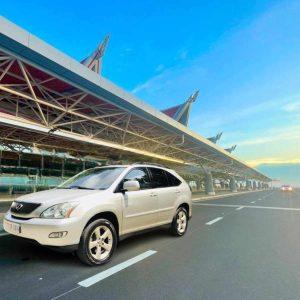
Private Siem Reap Airport SAI Transfers – Siem Reap Airport Pick-up or Drop-off, Just for You!
From: 30$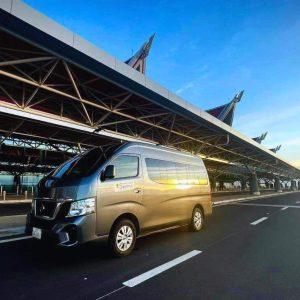
Shared SAI Siem Reap Airport Transfer – We depart every 1 hour!
From: 9$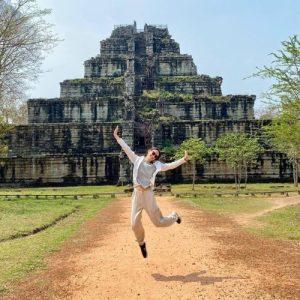
Private Full-Day Siem Reap to Koh Ker & Beng Mealea Temple Tour
From: 75$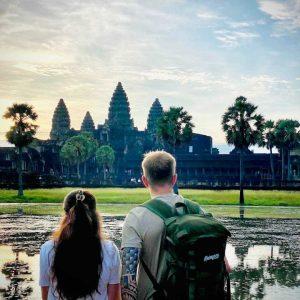
2-Day Angkor Wat Sunrise & Banteay Srei Grand Tour – Small Group Tours
From: 30$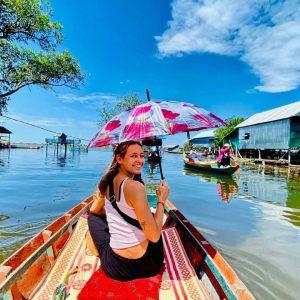
2-Day Angkor Wat Temple Sunset and Floating Village Tour
From: 40$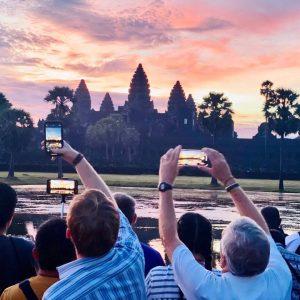
3-Day Angkor Wat Sunrise, Banteay Srei and Floating Villages Tour – Small Group Tours
From: 50$